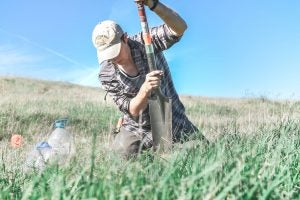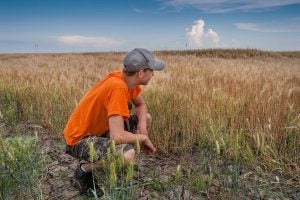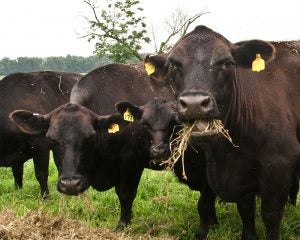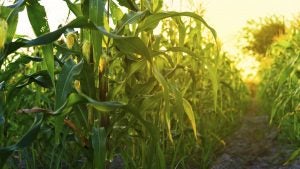Every few years, the federal government crafts legislation that has broad, policy-defining implications for food and farming in America — it’s commonly known as the farm bill. While the formal name changes — the Farm Security Act of 2002; the Food, Conservation, and Energy Act of 2008; and the Agriculture Improvement Act of 2018, just to name a few — the leadup to the 2023 farm bill has been the source of much debate among agriculture’s biggest stakeholders. This article delves into what many national and regional agriculture organizations have been curating over the past few months as they put forth their policy priorities to their members ahead of Congress’ 2023 farm bill discussions.
The farm bill is perhaps the single most important package of legislation for the agriculture industry and rural America, and it’s up for discussion every five years. The farm bill is an extremely complex, multi-year law that enacts legislation on issues including, but certainly not limited to, farm commodity support, nutrition (think SNAP), and crop insurance. Not only are the U.S. Department of Agriculture and the agriculture industry affected by lawmaker decisions regarding this legislation, but so is the general public, as it determines the budget for many programs the government oversees, such as school food programs, health care, rural broadband initiatives, climate change and university funding for research.
The most recent farm bill was enacted in December of 2018 and expires September 30, 2023. It focuses on 12 “Titles” — all of which fall into either mandatory or discretionary spending categories. That means not all titles are guaranteed the same funding, or any funding at all, when it comes time to renew. For reference, the mandatory programs in the 2018 farm bill were estimated to cost $428 billion over five years. Only four titles, out of the 12 listed, accounted for 99 percent of this category: Nutrition, Commodities, Crop Insurance, and Conservation. All other categories’ funds were subject to appropriations approved by Congress outside of the Congressional Budget Office (CBO) projections.
According to Congressional Research Service reports, the 2023 budget is estimated at $648 billion over the next five years.
Following a worldwide pandemic, subsequent economic shakeup and market uncertainty, this renewal is kind of a big deal, so it comes as no surprise that organizations across the nation are releasing their farm bill “wishlist” of priorities they’d like to see on the 2023 renewal. This time around, discussions regarding conservation are increasing, and staples, like nutrition, remain controversial.
American Farmland Trust
The mission of American Farmland Trust (AFT) is to conserve farmland and protect working lands against urban development, ensuring its use stays in agriculture production for future generations. That differs slightly from other organizations that would like to see an expansion of the Conservation Reserve Program (CRP) in the next farm bill, where environmentally sensitive lands are removed from production for 10 to 15 years in return for a yearly payment.
AFT’s detailed list of priorities includes increased funding for the Agricultural Conservation Easement Program (ACEP) to meet a growing demand by landowners to protect and preserve their farmland. Additionally, they ask for other improvements to this program that include reducing administrative burdens on land trusts and public Purchase of Agricultural Conservation Easement (PACE) programs, giving the USDA’s Natural Resources Conservation Service flexibility to allow alternative valuation approaches, and provide additional clarity and flexibility around easement administrative actions to reduce the time landowners wait for required approvals and to avoid costly litigation.

Not only does the AFT seek more land conservation for the next 5 to 10 years, but they look to the farm bill to also provide technical assistance and cost share for conservation practice adoption by landowners. AFT recommends that Congress ensures plentiful, sustained funding for conservation programs that improve soil health, contribute to climate and water resilience and reduce GHG emissions. Programs like Environmental Quality Incentives Program (EQIP), which help farmers, ranchers, and forest landowners establish conservation practices on working lands, was only able to fund 30 percent of applications between 2010 and 2020, according to AFT, and only 1 percent of producers of color received this funding.
AFT seeks to increase funding for conservation programs and provide marginalized producers better access to these programs in the upcoming farm bill.
With the risk of working lands being turned into urban development sites, succession and estate planning are top of mind for AFT. Their hope is that more support for business technical assistance, to support producers and landowners with business planning, farm transfer and land access will be established through grant programs or other financing options. Under this umbrella, they want Congress to invest more in Farm Link programs, resource-sharing, and educational resources through the Beginning Farmer and Rancher Development Program, and desire better monitoring of farmland ownership trends through data collection and research.
American Farm Bureau Federation
Setting the tone for state farm bureaus across the nation, the American Farm Bureau Federation (AFBF) set their priorities in October, with the board of directors voting unanimously to approve the detailed list of over 60 recommendations, which will then be finalized at the AFBF Convention in January 2023.
Their list begins with a set of overarching principles they, as an organization, support during the development of farm bill programs. The principles they listed state, “Protecting current farm bill program spending, ensure adequate USDA staffing capacity and technical assistance, requiring any changes to the current farm legislation be an amendment to the Agricultural Adjustment Act of 1938 or the Agricultural Act of 194, prioritizing risk management tools and funding for both federal crop insurance and commodity programs, and maintaining a unified farm bill which keeps nutrition and farm programs together.”

Their full priorities list focuses mostly on Titles 1, 2 and 11, which are Commodities, Conservation, and Crop Insurance, respectively. AFBF breaks down their top recommendations under each title, starting with dairy.
The key is retaining the current Dairy Margin Coverage program (DMC), which protects dairy producers when the difference between the all-milk price and the average feed price falls below a certain dollar amount, with supplemental and feed cost updates, promoting whole milk through the special milk program through schools, nutrition assistance and the military, and opposing regulations or legislation that will ban or limit flavored milk in schools are just a handful of items AFBF supports for the farm bill renewal.
As conservation shifts even more to the front and center of ag policy discussion, AFBF stands firm in its support of programs like EQIP, the Conservation Stewardship Program, which incentivizes private landowners to manage and maintain conservation activities, and ACEP. Similar to AFT’s recommendations, AFBF encourages prime farmland to be brought back into production, and capping acreage enrollment in the CRP in order to keep working lands in production, unless they are highly erodible or nonproductive. The organization also supports prioritizing water quality and soil health over wildlife protection under the CRP.
AFBF opposes limits on the availability of risk pools in regards to crop insurance, whether that is caused by income limits, means testing, or other add-ins that can have a negative impact, and the organization supports developing risk management tools for livestock producers. The organization also wishes to expand the list of insured commodities to include specialty crops, as well as define this term as “any fruit, vegetable, nut or non-program crop grown for consumption and sales,” and ensure adequate funding for the specialty crop industry — focusing on research, marketing, and pest management programs.

Rural Development is a topic under the farm bill that may not be one of the “big four” but certainly holds a lot of weight for the ag community, and AFBF didn’t hold out on its recommendations for Congress. Broadband is a massive block for many rural farmers and ranchers who need reliable access in a world that is dependent on the internet. AFBF requests programs that prioritize resources for rural communities that are in the most need for connectivity. Building processing and marketing opportunities for direct-to-market producers, including infrastructure and workforce development, are also two crucial asks from the farm bureau as local producer markets have seen massive growth in the past few years.
The nutrition title is the behemoth of the farm bill, and while it tends to be the most controversial, it also has the power to not only help those in need but also boost the market share for producers. AFBF wants to leverage this power by supporting the inclusion of a block grant program which would connect food banks and food access networks with specialty crop farmers directly, providing technical and monetary assistance to farmers who can, in turn, adopt online SNAP sales, and using SNAP for U.S. grown products when available.
Center for Rural Affairs
In the Corn Belt, rural advocacy group, Center for Rural Affairs (CFRA), spoke directly to, or heard from, thousands of rural community members to hash out their farm bill wishlist. The organization has their eyes on improving funding for crop insurance (a no-brainer with all the natural disasters and market volatility occurring), which includes making the Pandemic Cover Crop Program an annual program. The program provides premium support to most producers who have crop insurance and planted a qualifying crop during the 2022 crop year but faced financial challenges due to the pandemic.
CFRA asks for an increase in the number of CSP practices available for producers, and seeks a standalone soil testing enhancement as well.

So as not to leave out beginners and small producers, CFRA also supports raising the Rural Microentrepreneur Assistance Program loan amount from $50,000 to $75,000 and opposes the requirement of Microenterprise Development Organizations to use multiple sources of funding as a way to provide loans to underserved business owners. The group also sees a lot of opportunity with small meat processors and wants to secure long-term funding for the Meat and Poultry Intermediary Lending Program, as well as allow lenders to use up to 5 percent of any grant monies awarded towards expenses related to loans.
The group also seeks to break the language barrier by requesting all program updates be provided in non-English speaking languages, and provide a list of reliable interpreters who have agricultural connections in the Corn Belt states.
National Young Farmers Coalition
The farm bill isn’t only for veteran farmers and ranchers, as many organizations have made clear. Beginners and minorities have needs that this legislation can directly address through land access, better credit options and mental health access for beginner, young, and minority
farmers. These are priorities the National Young Farmers Coalition hopes our government will put more focus on for 2023.
Every five years, the NYFC surveys farmers from each state to collect data regarding current issues facing the future generations of farming. They compile this information into their Young Farmer Agenda, which presents the policy recommendations for the farm bill. The list is more expansive and detailed than can be written here, so be sure to follow the link to read the agenda in its entirety.

In 2022, 10,091 responses to the survey were received between December 2021 and April 2022. The survey focused on BIPOC issues, and included responses from farmers who don’t farm for income, in order to better serve the diverse needs of their audience. The results revealed the needs of farmers to include farmland ownership data collection in order to gain more insight into farmland transitions, tenure and ownership. Since marginalized farmers struggle to gain access to land, and retiring farmers face legal, tax and health issues when it comes to transitioning their land, NYFC also asks for the incentivization of land transitions by excluding young and BIPOC producers from paying capital gains on farmland purchases, as well as continuing to invest in the Heirs’ Property Relending Program. This program, authorized under the 2018 farm bill, provides loan funding to eligible farmers to resolve ownership and succession on farmland with multiple owners.
The NYFC also launched the One Million Acres Campaign, requesting a hefty $2.5 billion farm bill investment that has the ability to aid 50,000 young farmers enter, or stay in the industry over the next 10 years through access to one million acres of land.
National Cattlemen’s Beef Association
Livestock groups also chime in when it comes time to build their wishlist. The National Cattlemen’s Beef Association (NCBA) shares similar priorities with other organizations but adds animal health as a main item. In the 2018 bill, two new programs, the National Animal Vaccine and Veterinary Countermeasures Bank, and the National Animal Disease Preparedness Response program were established to aid the livestock industry if a Foot and Mouth Disease (FMD) outbreak occurred. This also included on-farm biosecurity and FMD preparedness educational materials.
Continuing to support these programs, and those related to animal health, is vital to livestock groups.

NCBA’s four most prominent priorities are:
- Protecting animal health through programs that guard against the spread of foreign animal diseases such as the National Animal Vaccine and Veterinary Countermeasures Bank, which currently houses the Foot-and-Mouth Disease vaccine. NCBA previously advocated for this vaccine bank in the last Farm Bill and producers recognize the danger that a foreign animal disease poses to the industry and the protection this bank provides.
- Strengthening risk management programs that provide producers with added protection against weather events and price decline.
- Promoting voluntary conservation programs that provide support for producers to implement conservation practices free from government mandates.
- Supporting disaster recovery programs that help producers return to normal operations following adverse weather, attacks by predators, or extreme conditions like drought and wildfire.
Disaster assistance has been a continued piece of the farm bill over the years, but with recent intense wildfires, droughts, hurricanes and floods the industry has become all too familiar with, groups like NCBA are letting Congress know that support for these programs is still a major priority. While assistance comes in many forms, from crop loss to farmland damage, producers also benefit from livestock-specific assistance as well. The Emergency Assistance for Livestock, Honeybees, and Farm-raised Fish provides assistance to producers should they experience losses due to illness, adverse weather, or other natural disasters. The livestock Forage Disaster Program provides compensation to producers who have suffered losses due to drought or fire, and the Livestock Indemnity Program provides benefits to producers who have losses caused by wild animals — a fear that is increasing as various states are discussing reintroducing wolves.
National Sustainable Agriculture Coalition
Further confirming the desire to shift focus on more climate-conscious legislation, individual farmers and ranchers, along with the National Sustainable Agriculture Coalition (NSAC), are asking for more priority placed on small, beginner producers and sustainability programs. One way to achieve this is through the inclusion of the Agricultural Resilience Act (ARA). The ARA is explained as a “road map” for reaching net-zero greenhouse gas emissions by 2040 through voluntary and incentive-driven measures. The ARA will invest in research, extension, conservation and energy all while provided farmers with the tools to address climate change.
The NSAC hopes the Sustainable Agriculture Research and Education program will continue to be supported in the next farm bill, as the only “regionally based, farmer-driven, and outcome-oriented” research program that focuses solely on sustainable agriculture.

Continuing on with the conservation theme, The group also looks to carry on the investments into regional and local food systems with the Local Agriculture Market Program (LAMP), an umbrella program supported in the 2018 legislation, which invests in local and regional food supply chains.
Echoing the thoughts of other groups listed already, NSAC recognizes that the need for support for small meat processors deserves the attention of Congress. With the Strengthening Local Processing Act (SLPA), which would help small to very small meat processing plants expand, meat processors could potentially have access to training programs for jobs, technical assistance to support scaling of plants, and be provided guidance on food safety.
National Corn Growers Association
This omnibus legislation gets pretty niche as well, with groups like the National Corn Growers Association (NCGA) supporting Kansas U.S. Sen. Roger Marshall’s Fertilizer Stewardship, Utilization, Sustainability, Technology, Access, Innovation and Nourishment (Fertilizer SUSTAIN) Act. The act requests that federal fertilizer regulations be eliminated from the upcoming farm bill and comes at a time when fertilizer costs have skyrocketed, and supply has been uncertain, therefore, strengthening domestic supply and access to crop nutrients for farmers.

The NCGA website didn’t have a detailed list of priorities but mentioned that it seeks to bolster international market development, protect crop insurance, support conservation programs with voluntary enrollment, and strengthen the producer safety net.
Other Key Players
Most importantly, there are numerous other stakeholder wishlists that aren’t mentioned here, including activist groups that have their own agendas and may not have farmers’ and ranchers’ best interests in mind. Overall, most of these wishlists simply seek to expand funding for previously implemented programs supported by past farm bill legislation. Ensuring programs continue to be funded, and hopefully see an increase in these funds, means getting more done the next 5 to 10 years. Some of the biggest concerns are that programs and funding will be taken away and reallocated for the nutrition title, which takes up over 75 percent of the entire farm bill funding! Due to a sharp increase in food costs, this fear is legitimate.
While every item on every list would be heartbreaking to cut or lose funding on, the reality is that money is finite and cuts will most likely occur. One big red flag to watch out for is the divide between the House and the Senate as they begin talks regarding the 2023 farm bill. It is already apparent that disagreements surrounding the nutrition title could stall the bill’s approval. The proposal of cuts to the nutrition title by some doesn’t align with others’ beliefs that cutting funding could be detrimental to the country.

During a December hearing titled, Farm Bill 2023: Research Programs, U.S. Senator John Boozman (R-AR), the ranking member of the U.S. Senate Committee on Agriculture, Nutrition, and Forestry, said, “As we begin drafting the new farm bill, our priorities must take into consideration what is happening on the international stage. The world has been teetering on the brink of a massive food crisis for some time now. The Russian conflict in Ukraine, two grain exporting countries whose products feed some of the most vulnerable people in the world, has added fuel to that fire.”
He continued by saying, “Innovation is the answer to the challenge of feeding our growing population, as well as giving our farmers and ranchers the ability to help meet the needs of an ever-changing global dynamic. … It is my goal to deliver a farm bill that provides focus and clarity to USDA’s research enterprise. American agriculture is best served when we target our efforts and have focused, well-funded, and flexible research programs that can have widespread impact and find broad stakeholder support.”
Markie Hageman majored in agribusiness at Fort Hays State University. She is actively involved in her state Cattlemen’s Association, Young Farmers chapter, and National Cattlemen’s Beef Association. Her AGDAILY.com articles can be found here.



